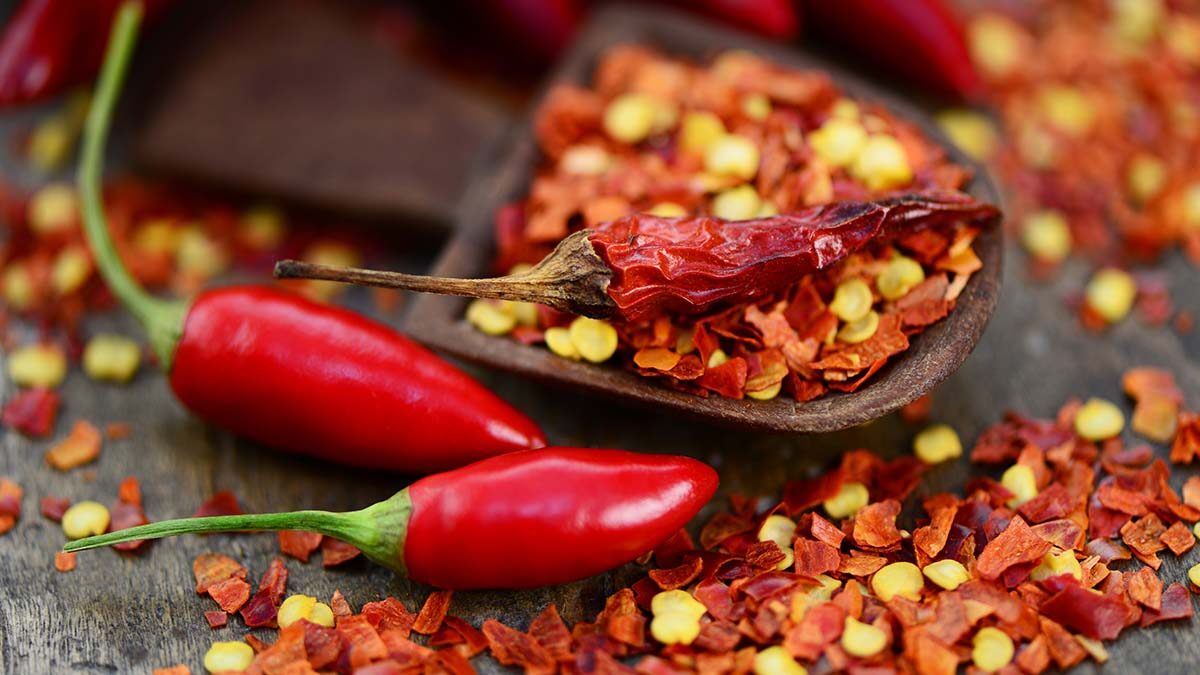Until about ten years ago, brown adipose tissue (BAT) was considered to be biologically active only in babies and small children where it generates heat by burning fat. But now, there is no doubt that active brown fat is present in adult humans and is involved in cold-induced increases in whole-body calorie expenditure and, thereby, helps control of not only body temperature but also how fat we are.
In 2013, researchers showed that one could activate brown adipose tissue if you chill out people long enough, specifically, by exposing them to two hours of cold every day for six weeks, which can lead to a significant reduction in body fat. You can see an illustrative graph in my video Boosting Brown Fat Through Diet. Although researchers demonstrated the effective recruitment of human brown fat, it would seem difficult to increase exposure to cold in daily life. Thankfully, our brown fat can also be activated by some food ingredients, such as capsaicin, the compound that makes hot peppers hot.
While physical activity is usually recommended to increase energy expenditure, there are specific food components, such as capsaicin, that are known to burn off calories. For example, one study found that there was a significant rise in energy expenditure within 30 minutes of eating the equivalent of a jalapeño pepper.
Normally when we cut down on calories, our metabolism slows down, undercutting our weight loss attempts; but sprinkling a third of a teaspoon of red chili pepper powder onto our meals counteracts that metabolic slow down and promotes fat burning. Researchers wanted to try giving participants more chili pepper in order to try to match some of the studies done in Asia, but the Caucasian subjects couldn’t take it. But by adding more than a tablespoon of red pepper powder to a high-fat meal, Japanese women burned significantly more fat.
We’ve known for decades that cayenne pepper increases metabolic rate, but we didn’t know how. But studies show that this class of compounds increases energy expenditure in human individuals with brown fat, but not in those without it, indicating that individuals increase expenditure right off the BAT. Additionally, there is a variety of structurally similar flavor molecules in other foods, like black pepper and ginger, that may activate thermogenesis as well, but they haven’t been directly tested.
All these results suggest that the anti-obesity effects of pepper compounds are based on the heat-generating activity of recruited brown fat. Thus, repeated ingestion can mimic the chronic effects of cold exposure without having to freeze ourselves.
Consumption of spicy foods may help us lose weight, but what about the sensory burn and pain on our tongues and sometimes in our stomachs as well as further on down? Are our only two options for boosting brown fat to freeze our legs or burn our butts?
Arginine-rich foods may also stimulate brown adipose tissue growth and development through a variety of mechanisms, which is achieved by consuming more soy foods, seeds, nuts, and beans.
For more on brown adipose tissue, see Brown Fat: Losing Weight Through Thermogenesis.
What about arginine? Check out Fat Burning Via Arginine. And, did you know arginine may also play a role in the effects nuts may have on penile blood flow? I discuss this in Pistachio Nuts for Erectile Dysfunction.
For more on spicy foods, see my videos Cayenne Pepper for Irritable Bowel Syndrome and Chronic Indigestion to learn how digestive disorders may be helped and Hot Sauce in the Nose for Cluster Headaches? for information on how the hot pepper compound can be a lifesaver for people suffering from “suicide” headaches.
In health,
Michael Greger, M.D.
PS: If you haven’t yet, you can subscribe to my free videos here and watch my live, year-in-review presentations:
- 2012: Uprooting the Leading Causes of Death
- 2013: More Than an Apple a Day
- 2014: From Table to Able: Combating Disabling Diseases with Food
- 2015: Food as Medicine: Preventing and Treating the Most Dreaded Diseases with Diet
- 2016: How Not To Die: The Role of Diet in Preventing, Arresting, and Reversing Our Top 15 Killers
